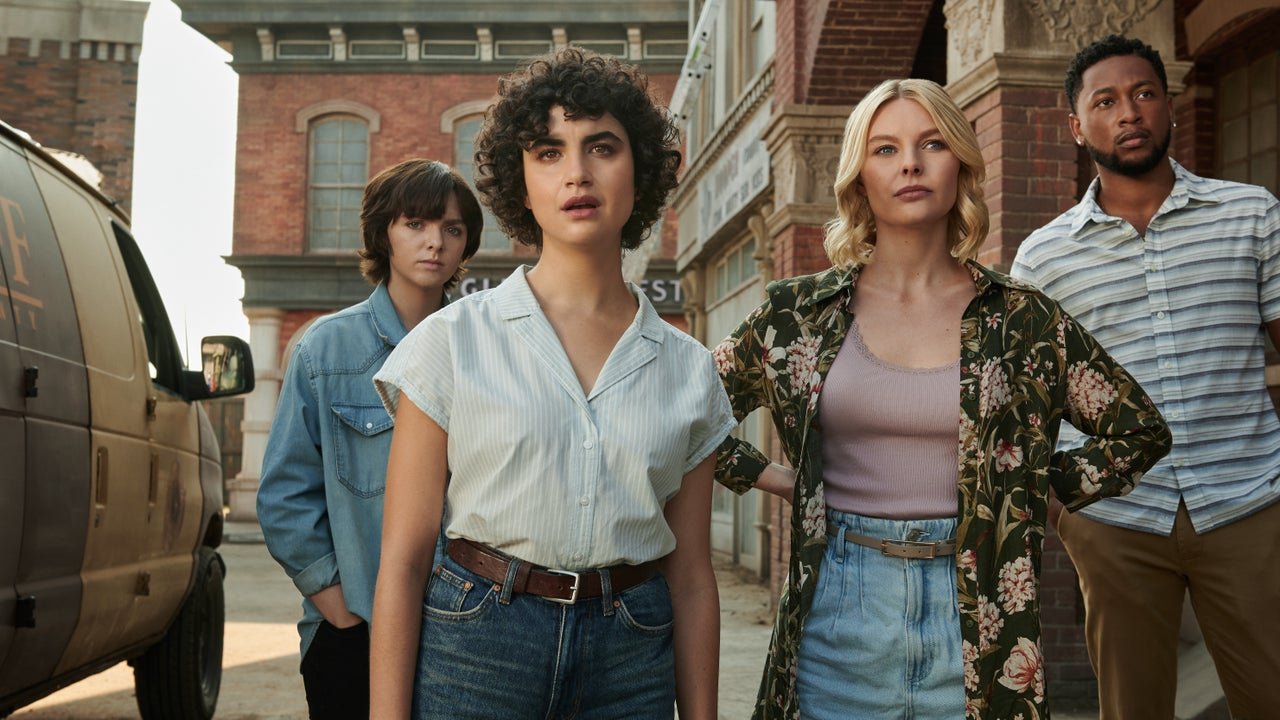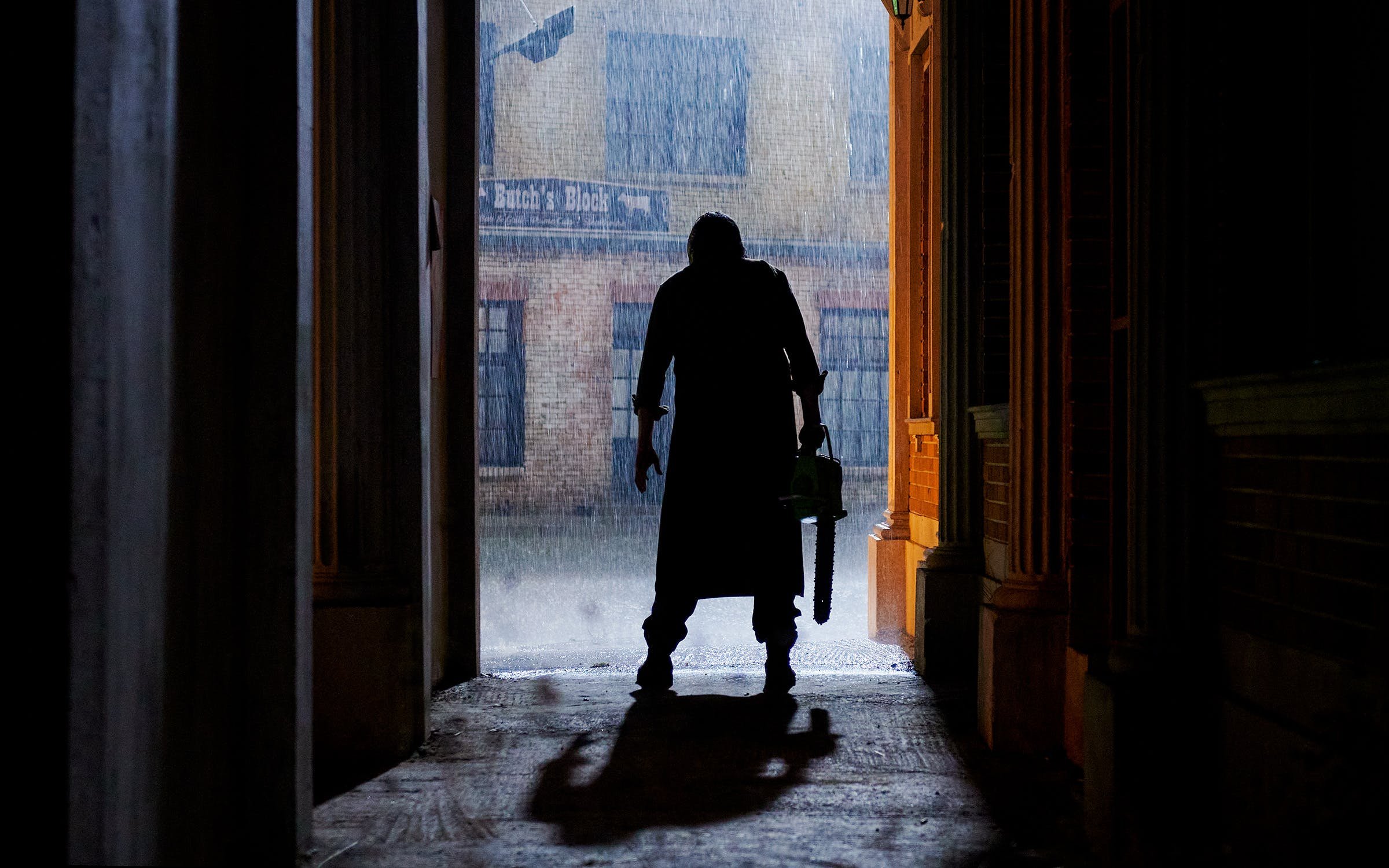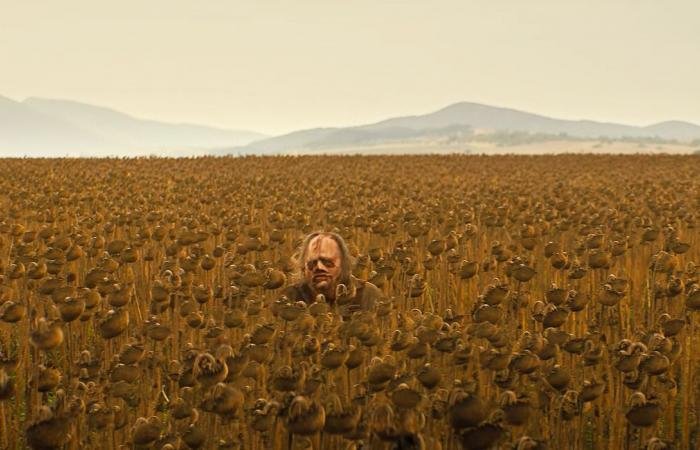When reviewing something like Netflix’s new Texas Chainsaw Massacre, I think some bonafides are helpful to the reader. I’m a huge fan of Tobe Hooper’s original film from 1974. The rest of the franchise entries I could take or leave, although I don’t mind revisiting the first two sequels every now and again.
I probably would have ignored this new iteration, but the marketing invoked the “old man (fill in the blank)” trope. It’s an offspring of the imaginary future story, the pinnacle of which is Frank Miller’s seminal Dark Knight Returns comic from 1986. While the two sub-genres are very similar, I think the new approach focuses more on the hero’s advanced age, their incompatibility with whatever modern world they exist in, and the finality of the adventure. See James Mangold’s Logan for a cinematic example. Director David Blue Garcia doesn’t totally embrace the genre’s rules, but he utilizes enough to keep it interesting.
The narrative concerns a group of urban hipsters (Sarah Yarkin, Elsie Fisher, Jacob Latimore, and Nell Hudson) who, along with a group of other young entrepreneurs, have purchased an abandoned town in Texas with the intention of gentrifying it. Unbeknownst to our leads, the hulking cannibalistic killer known as Leatherface (Mark Burnham) has been living in the town with the elderly ex-head of an orphanage (Alice Krige). When the old woman dies after unfortunate circumstances, Leatherface returns to his murderous ways. The initial reports of violence quickly draw the attention of Sally Hardesty (Olwen Fouere), the sole survivor of the original film’s carnage. Sally, now a grizzled veteran Texas Ranger, is determined to avenge her murdered friends and family.
Chris Thomas Devlin wrote the script, based on a story by experienced rebooters Fede Alvarez and Rodo Sayagues. The story essentially ignores everything in the franchise’s history besides the first film ala 2018’s Halloween. The approach to Sally’s character is also indebted to that film, too. However, Sally is more of a minor character here than Jamie Lee Curtis’ Laurie Strode is in that film. Devlin works in some interesting themes about urban vs rural culture, the ethics of gentrification, gun violence, and the ghosts of the past from both a personal and political standpoint. This mostly gets dropped once the gore starts spurting, but it’s enough to add some relative depth. Keeping in line with the genre sensibility I mentioned above, Leatherface is often juxtaposed with modern iconographies, such as self-driving cars, smartphones, and social media. Additionally, both he and Sally’s ages are emphasized, inviting us to key in on what has and hasn’t changed for these characters and our society over the last half-century.
However, the writing isn’t always strong. Characters sometimes behave in ways that strain the bounds of credulity in order to achieve plot points. Also, Leatherface is elevated to superhuman levels of recovery, shrugging off multiple stabbings and gunshot wounds. There are a few comedic moments that take aim at easy targets that I think could’ve had their points made without resorting to cheap jokes. For the most part, though, these issues didn’t detract from the overall experience for me.
The performances are pretty solid. The young leads don’t make or break the film, delivering mostly naturalistic performances. Fouere is fun, taking over the role of Sally from the late Marilyn Burns. The film probably could’ve used a bit more of her, but she’s nevertheless deployed effectively. Outside of her, Moe Dunford provides the most flavor as a shit-kicking cowboy contractor unimpressed by the invading city slickers.
The cinematography by Ricardo Diaz is strong, though its slick modern aesthetic is in direct contrast to the gritty lensing of the original. Sets are detailed and provide a lived-in quality that enhances the contrast of the city folks in a rundown small-town theme. Diaz provides some striking imagery. I particularly loved the sequences of Leatherface in the overgrown field and when he attacks the party in the blue-lit bus. Gore is plentiful and graphic, with the effects work looking to be a mixture of CG and practical. Even if you come away unimpressed with the film’s story, I think most viewers would agree that this is a good-looking film.
Another huge strength of the piece is Colin Stetson’s score. Although, again, it is a complete 180 from the music in the original film, I enjoyed how it incorporated some of the more iconic sound effects from that entry into the soundscape. It’s memorable work that comes across as thoughtful and fun.
I’ve already seen quite a few negative reactions to David Blue Garcia’s Texas Chainsaw Massacre. I suppose that was inevitable. However, I quite enjoyed it, even if ultimately I think it’s slightly inconsequential. I wish it would’ve leaned a little harder into the old man Leatherface aspect and made Sally more central to the narrative, but as it stands it was a nice splattery Saturday night popcorn muncher. It’s nowhere near as good as Tobe Hooper’s The Texas Chain Saw Massacre, but really, what is? Recommended, with caveats, for the aforementioned Halloween (2018) and Logan, as well the Evil Dead remake.
Michael Cavender





